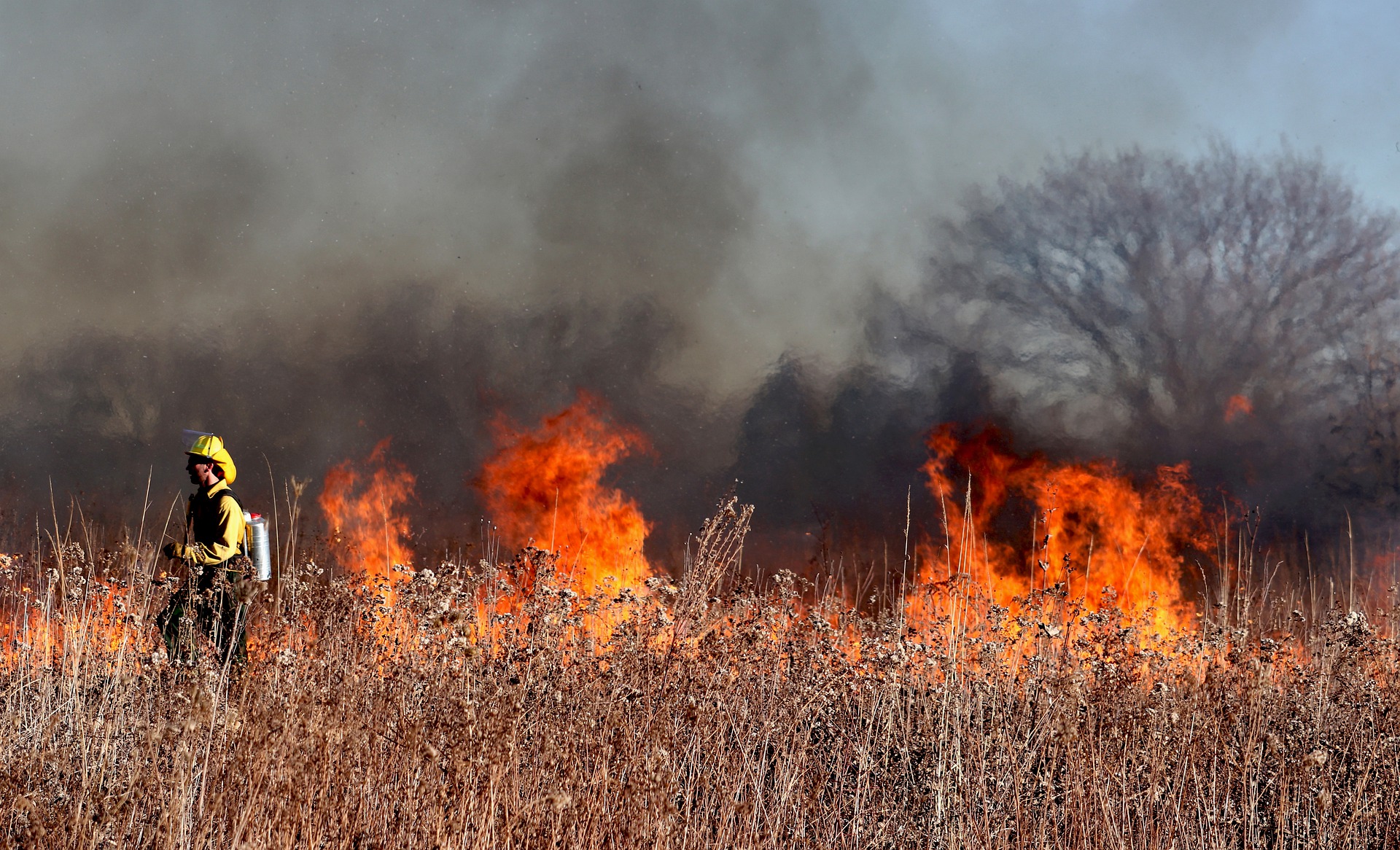Below are summaries from the National Significant Wildland Fire Potential Outlook, provided by the National Interagency Fire Center, for the period of May 2022 through August 2022. Additionally, the full wildfire outlook can be located here.
Year-to-Date Statistics:
| Year-to-date statistics | Number of Fires | Acreage Burned |
| 2022 (01/01/22 – 05/03/22) | 22,324 | 1,120,330 |
| 10-year Average (2012-2021) | 16,230 | 698,114 |
| Percentage of 10-year Average | 138% | 160% |
Source: https://www.nifc.gov/fireInfo/nfn.htm
Observations in April:
Fire activity continued to increase in April, mostly across the Southwest Area and the plains of Rocky Mountain Area, but slowly decreased in the Southern Area. Year-to-date acres burned for the US is approximately 70% above the 10-year average, with nearly 70% of the acres burned coming from Southern Area, which is not unusual through April.
Most of the West, Plains, and Texas remain in drought, with areas of drought also along the Gulf Coast and South Florida. Temperatures were above normal across the Southwest into Texas with below normal temperatures across much of the northern US. Below normal precipitation continued in the Southwest into the central and southern Plains. Snowpack continued to rapidly melt in the Southwest, with the below normal snowpack in the Northwest and Rockies melting off at a slow rate.

US Drought Monitor Status as of April 26, 2022
Much of the Southwest, Great Basin, and southern and central Plains received below normal precipitation in April. The most anomalously dry areas were across portions of the Desert Southwest, west Texas, eastern Colorado, Kansas, and Nebraska. Portions of the Southwest and west Texas received no precipitation in April. The Ohio River Valley into the southern Appalachians and portions of the Gulf Coast were also drier than normal. Much above normal precipitation was observed from eastern Montana through North Dakota and into northern Minnesota. Above normal precipitation occurred in much of the Northeast, northern California, and Northwest near and west of the Cascades. Additionally, near to above normal precipitation was observed from eastern Oklahoma through Arkansas and into Mississippi, Alabama, Georgia, and South Carolina. The Southwest into Texas observed above normal temperatures, with below normal temperatures from the Northwest east into the Great Lakes, Ohio Valley, and Appalachians.
Snowpack continued to melt in April, with very low to non-existent snowpack across the southern Great Basin, southern Colorado, and Southwest. However, snowpack melting was slower to the north due to the active snowpack with near to above normal snowpack in the Northwest and northern Rockies. Overall, drought continues across nearly 90% of the West and much of the Plains, with an intensification of drought in portions of the Plains, California, Arizona, and New Mexico. However, drought improved in much of east Texas and the Lower Mississippi Valley as well as the western Great Lakes and Northeast.
Fire activity increased markedly in the Southwest, with the geographic area now at preparedness level four. Fire activity also continued to increase in California, the Great Basin, Eastern Area, and across the plains of the Rocky Mountain Area. However, the Southern Area saw a decrease in fire activity in April. Generally, periods of increased activity coincided with widespread dry and windy conditions from the Southwest through the Plains, with the most intense critical fire weather conditions of the spring observed on April 22 across New Mexico and the southern and central Plains. Overall, over half of the Predictive Service Areas (PSAs) in the Southwest, eastern Colorado, and southern High Plains are reporting energy release component values near or above the 90th percentile. The national preparedness level remained at two with the increased fire activity in the Southwest and the forecast increased fire potential in May.
Wildfire Outlook for May – August:
Climate outlooks indicate below normal precipitation is likely across much of the Plains west through the central Rockies to the Northwest, with above normal temperatures likely across much of the contiguous US (CONUS) through spring into summer. Critically windy and dry periods are likely to continue through June for the Southwest and central and southern High Plains with an active severe weather pattern to the east over the eastern Plains and Ohio Valley. The North American Monsoon is likely to arrive on time and be robust this summer, but potential early moisture surges during June could result in periods of lightning across the Southwest, Colorado, and the southern Great Basin.
Above normal significant fire potential is forecast across the western Florida peninsula in May. The southern High Plains will retain above normal significant fire potential through August, with much of the Plains forecast to have above normal potential by July and spread into the western Mid-Mississippi Valley in August after green-up and subsequent curing occurs due to anticipated warmer and drier than normal conditions.
Most of the Southwest is forecast to have above normal significant fire potential in May and June, with potential increasing across southern and western Colorado and southern portions of the Great Basin before returning to normal in July. Above normal potential will likely expand from central Oregon to southwest Oregon and central Washington by July and much of the Northwest in August. Above normal significant fire potential is also forecast to increase across northern California from May into July, with rising potential likely along portions of the Sierra Front. Alaska is forecast to have below normal potential across the Interior in May, returning to normal in June. Leeward locations of Hawaii are forecast to have above normal potential during June and July.

NIFC Predictive Services Fire Potential Outlook for May 2022 as of May 1, 2022

NIFC Predictive Services Fire Potential Outlook for June 2022 as of May 1, 2022

NIFC Predictive Services Fire Potential Outlook for July 2022 as of May 1, 2022

NIFC Predictive Services Fire Potential Outlook for August 2022 as of May 1, 2022
Source: NIFC





One Comment